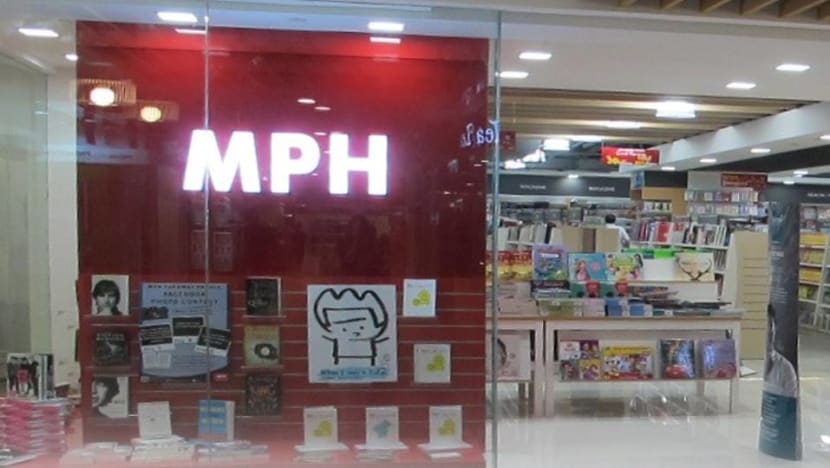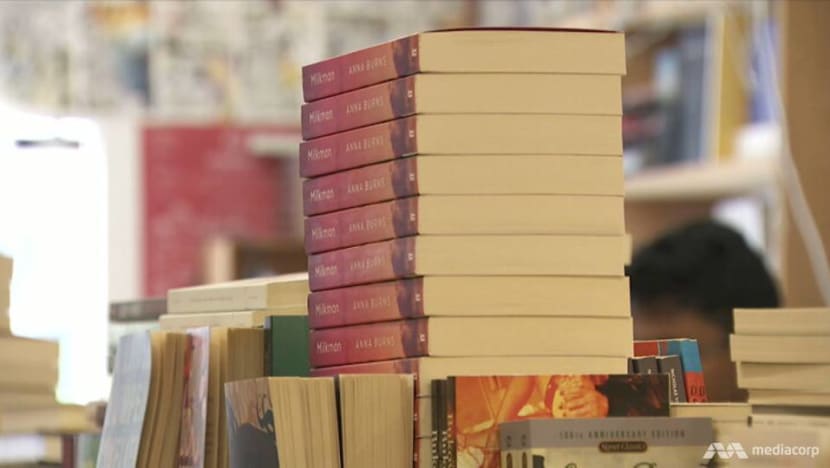Commentary: Bookstores struggle to stay afloat when we need them more than ever
Physical bookstores and the staff that run them are crucial to cultivating a love for reading in the community, says Associate Professor Loh Chin Ee of the National Institute of Education.

SINGAPORE: In the latest blow to Singapore’s bookstore scene, Kinokuniya shuttered its JEM mall outlet on May 9, citing sluggish sales and increased rental costs.
During the pandemic, indie bookstores BooksActually in Tiong Bahru and The Moon in Mosque Street closed their brick-and-mortar stores and moved business online. And before the pandemic in 2019, MPH Bookstores closed its last two outlets in Singapore at the time, before opening a new one at SingPost Centre.
Are we seeing the end of physical bookstores, accelerated by the digitalisation brought about by COVID-19? After all, we can order books at cheaper prices on sites like Amazon and Book Depository from the comfort of our homes, and receive them at the doorstep.
E-books are even more convenient to obtain. With one click, we can purchase and download anything that piques our interest. We can also borrow e-books from the National Library Board and read them from our smartphones, tablets or laptops without paying a single cent.
However, physical bookstores remain crucial to people’s experiences of reading. They provide the space for serendipitous discovery of new reads and for individuals to connect.
When pandemic restrictions were lifted after the circuit breaker period in June 2020, long lines of eager readers formed outside Books Kinokinuya’s main store in Ngee Ann City.

My family also visited Kinokuniya on one of our first shopping excursions then. We meandered through shelves of interest to us and walked away with new books to tide us through the rest of the pandemic.
BOOKSTORES STILL ESSENTIAL TO READING AS AN ACTIVITY
While books could be purchased online during lockdown, that cannot compare to the experience of looking at blurbs, flipping through books to gauge their weight and feel, and walking away with a purchase that can be enjoyed immediately.
Research shows that print is still the go-to medium for young readers. In a National Institute of Education study during the circuit breaker, researchers found that children under-utilised digital reading and preferred print books, which they were more familiar with. It was also easier for them to locate books on physical rather than virtual shelves.
In another study on the impact of technology on adolescents’ leisure reading conducted in 2021, print was preferred by most teenagers for reading novels.
In my research interviews with students, they tell me that they like to purchase hardcopy books – even when they can access them online for free – because they want a reminder of the pleasure they had when reading them and to be able to re-read them anytime at home.
One secondary school student told me he bought three titles of the blockbuster Japanese series Attack On Titan with his savings from Popular, after watching the anime and reading the manga online.
Some students discover books online, but then go on to purchase them offline. One 14-year-old student told me she came across No Longer Human by Osamu Dazai on BookTok, a vibrant community of young TikTok users discussing books they love. She purchased a hardcopy from Kinokuniya and made personal annotations as she engaged with the philosophically difficult text.BOOKSTORES SERVE THE COMMUNITY
Other than providing a wide selection of books for browsing, bookstores help Singapore’s literary community flourish.
Pre-pandemic, programmes such as author talks and seasonal launches at bookstores connected authors to their audience. Bookstores with cafes such as Grassroots Book Room and Huggs-Epigram also served as social spaces where readers could interact with writers.
During the pandemic, many bookstores soldiered on by bringing their programmes online. For example, Grassroots Book Room held online author talks and Wardah Books in Kampong Glam conducted silent book clubs through Zoom. They also sought to engage younger crowds by posting regularly on Instagram or through blog entries.
Some bookstores also serve niche needs and have on hand knowledgeable staff to help with curation. They collect and display books that are tailored to their clientele but still spark dialogue.
For instance, Wardah Books specialises in books for Muslim readers, though has since updated its collection to include books in English to appeal to a broader spectrum of readers.
Staff at niche bookstores also provide book recommendations. While online algorithms can predict and suggest relevant titles, they cannot hold a conversation with you to understand your tastes and preferences.
Parents or educators needing advice on children’s reading can pop by Woods in the Books at Yong Siak Street or its sister store, Books Ahoy at Forum. School library coordinators can approach specialised staff at Kinokuniya for the latest books suitable for students.

Booksellers have the expertise to listen to their customers, as well as the networks to source and bring in books that will appeal.
CAN BOOKSTORES SURVIVE?
However, the reality for bookstores is that shelf space is limited. With high rent, overhead costs of stocking a wide variety of books and more customers turning to online book purchases, it is not easy for bookstores to manage the balancing act of community service and economic viability.
Some have turned to e-commerce to generate additional revenue from online sales, while stores that go fully online do away with burdensome rental and manpower costs.
And some bookstores have bucked the trend – Hubei-based Zall pressed on with opening its first overseas branch at Wheelock place in 2021, committed to its belief that bookstores are vital in the pandemic.
There is hope for physical bookstores as COVID-19 restrictions ease and tourism picks up pace again. In a CNA 938 interview on May 9, Mr Kenny Chan, former senior store and merchandising director and current consultant at Kinokuniya, said that regional customers were returning with the relaxation of travel rules.
Now that many Singapore bookstores have established online ecosystems, perhaps they could consider virtually expanding into regional marketplaces to support their existing physical bookstores.
HOW WE CAN SUPPORT OUR BOOKSTORES
The presence of bookstores in malls and neighbourhoods goes a long way in cultivating a love for reading in the community. They allow passers-by to step in and explore new worlds offered by books.
Landlords could play their part by providing preferential rents to booksellers. While profit maximisation is the main goal of landowners, they too can contribute by ensuring some retail space is set aside for bookstores.
This way, the consumer has the option to consider books, alongside clothes, tech gadgets and tuition centres, as part of the shopping experience.
As consumers and lovers of books, we too need to put our money where our mouth is by purchasing books from bookstores, whether in-store or online.
The next time you walk into a bookstore, consider your purchase a commitment towards keeping it afloat. That’s a small price to pay to retain our beloved bookstores.
Loh Chin Ee is Associate Professor and Deputy Head (Research) at the English Language and Literature Academic Group at the National Institute of Education.


















